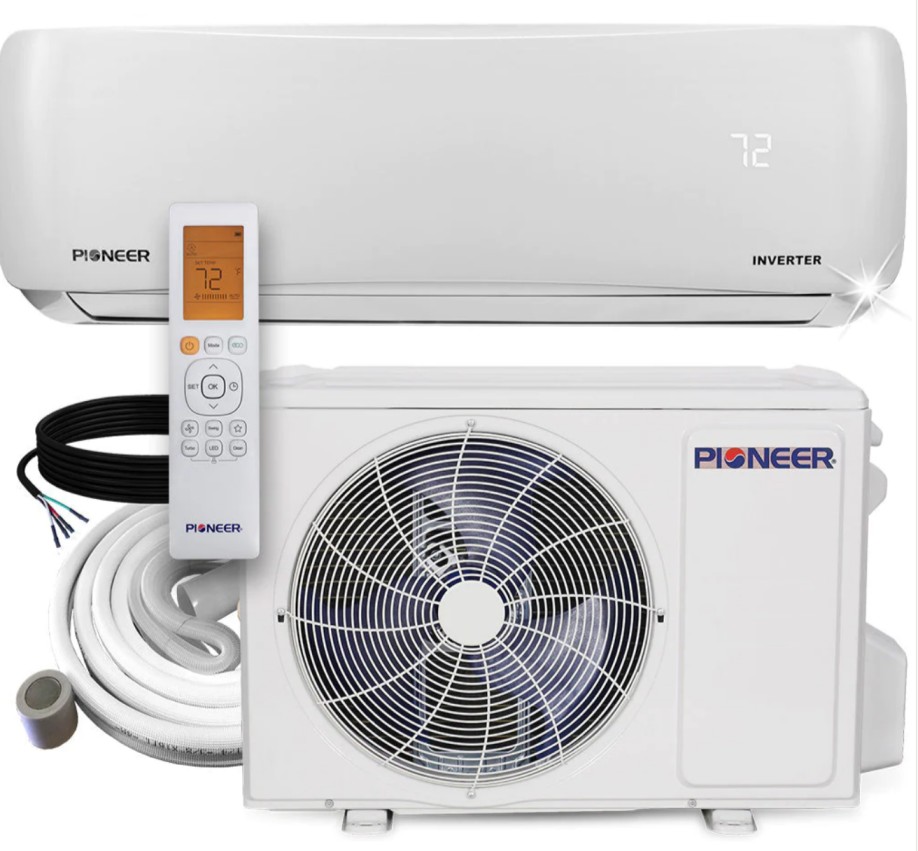Summary
Pioneer air conditioners and heat pumps are primarily manufactured by Parker Davis HVAC International, Inc., a company based in Miami, Florida, USA. However, the key components, such as scroll compressors, are primarily produced in China. Pioneer mini-splits were previously rebranded Gree units, also made in China, but it is unclear if this is still the case. The manufacturing process for Pioneer units involves highly automated electronic parts manufacturing, with robots creating precise and reliable parts. Safety and quality are prioritized, with heat exchangers tested for leaks and units undergoing various tests, including dielectric strength tests and infrared signal transmission tests.
Understanding the Manufacturing Process of Pioneer AC Units
Automated Electronic Parts Manufacturing
The manufacturing process for Pioneer AC units is highly automated, with robots playing a crucial role in the creation of precise and reliable parts. This advanced level of automation ensures consistent quality and efficiency throughout the production line.
-
Robotic Assembly: The assembly of electronic components is primarily handled by robotic systems, which can perform tasks with a high degree of accuracy and repeatability. This helps to minimize human error and ensures that each part is assembled to the exact specifications.
-
Precision Engineering: The use of robots in the manufacturing process allows for the creation of intricate and complex parts with tight tolerances. This level of precision is essential for the proper functioning of the AC units.
-
Streamlined Production: The automated nature of the manufacturing process enables a streamlined and efficient production flow, allowing for the rapid assembly of Pioneer AC units while maintaining high standards of quality.
Quality Assurance and Safety Measures
Ensuring the safety and reliability of their products is a top priority for Pioneer. The company has implemented various testing and quality control measures throughout the manufacturing process.
-
Heat Exchanger Testing: Each heat exchanger is thoroughly tested for leaks to ensure that the AC unit will operate safely and efficiently.
-
Dielectric Strength Tests: Pioneer AC units undergo dielectric strength tests to ensure that the electrical components are properly insulated and can withstand the required voltage levels.
-
Infrared Signal Transmission Tests: The infrared signal transmission capabilities of the AC units are tested to verify that the remote control and other wireless features function as intended.
-
Comprehensive Inspections: In addition to the specific tests mentioned, Pioneer AC units undergo a comprehensive inspection process to identify and address any potential issues before the units are shipped to customers.
Sourcing of Key Components
While the final assembly of Pioneer AC units takes place in the United States, the company sources some of the key components from international suppliers, particularly in China.
-
Scroll Compressors: The scroll compressors used in Pioneer AC units are primarily produced in China, as this country has become a global leader in the manufacturing of HVAC components.
-
Mini-Split Rebranding: In the past, Pioneer mini-split units were rebranded versions of Gree units, which are also manufactured in China. However, it is unclear if this is still the case, as Pioneer may have shifted to producing their own mini-split designs.
-
Globalized Supply Chain: The reliance on international suppliers for certain components is a common practice in the HVAC industry, as it allows manufacturers to leverage the expertise and cost-effectiveness of specialized production facilities around the world.
Considerations for DIY Installation
While Pioneer AC units are designed for professional installation, some homeowners may consider attempting a DIY installation. However, it is crucial to be aware of the potential implications.
-
Warranty Coverage: The vast majority of mini-split warranties, including those for Pioneer units, do not cover DIY installations. Professional installation is a requirement for warranty coverage.
-
Warranty Terms and Conditions: It is essential to carefully read the fine print in the warranty certificate to fully understand the terms and conditions, including any specific requirements for installation and maintenance.
-
Safety and Compliance: Improper installation of an AC unit can pose safety risks and may not comply with local building codes and regulations. Professional installation ensures that the unit is installed correctly and in accordance with all relevant standards.
-
Troubleshooting and Maintenance: DIY installation may make it more challenging to troubleshoot and maintain the AC unit in the future, as the installer may not have the necessary expertise or access to specialized tools and resources.
Conclusion
In summary, Pioneer AC units are primarily manufactured by Parker Davis HVAC International, Inc., a company based in Miami, Florida, USA. While the final assembly takes place in the United States, some key components, such as scroll compressors, are sourced from international suppliers, particularly in China. The manufacturing process is highly automated, with robots playing a crucial role in the creation of precise and reliable parts. Safety and quality are prioritized throughout the production process, with various testing and inspection measures in place.
For homeowners considering a DIY installation, it is essential to be aware that the vast majority of mini-split warranties, including those for Pioneer units, do not cover DIY installations. Professional installation is required to maintain warranty coverage and ensure the safe and proper operation of the AC unit.

